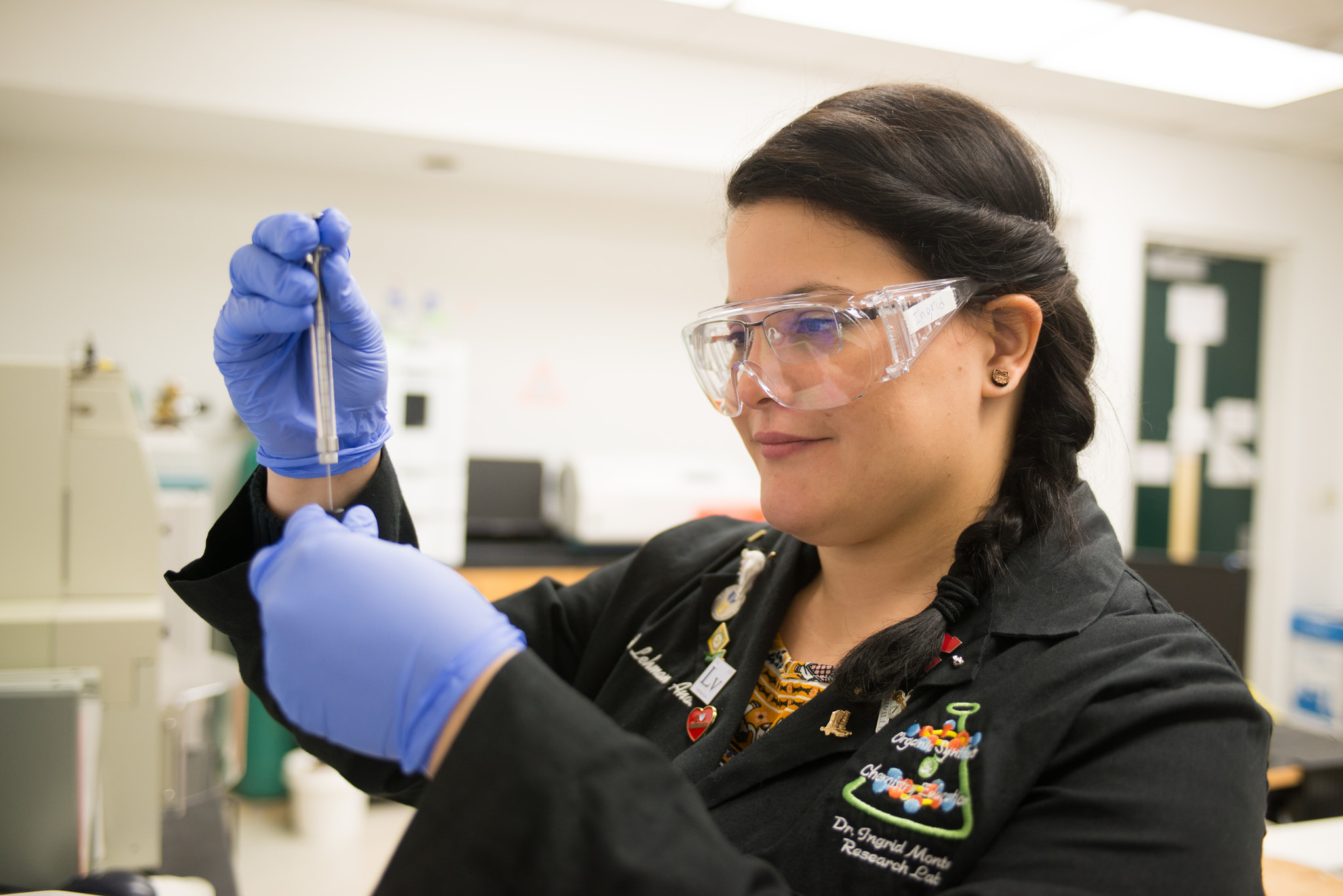
The United States has a pretty big problem on its hands – an 80,000-metric-ton radioactive problem. It will take more than 100,000 years to go away.
Radiochemistry Ph.D. student Ingrid Lehman-Andino and two of FIU’s nuclear chemistry professors are working on a solution. The researchers believe the U.S. could lessen the impact of climate change by producing nuclear power with smaller amounts of reused, short-lived radioactive waste that is less toxic than what is used now.
Most of the radioactive waste comes from the production of nuclear weapons from the cold war. Some comes from the nuclear power plants, which produce affordable energy with a low carbon footprint.
Spent nuclear fuel from power plants is mostly stored near the power plants that consume it. Today, there is no long-term storage solution for storing spent nuclear fuel in the United States.
Lehman-Andino is working to discover the molecule that could pull harmful radioactive isotopes from the nuclear soup that’s left when a reactor reaches the point that it needs to be refueled. By removing these elements from the used fuel, Lehman-Andino and professors Konstantinos Kavallieratos and Christopher Dares are hoping to make most of the waste less hot, less radioactive, less dangerous. They also hope to inject these isotopes back into other reactors as a new source of nuclear fuel, increasing the amount of energy produced from uranium today.
Part of Lehman-Andino’s research takes place at the Modesto A. Maidique Campus, where she works with molecules called ligands. She is investigating whether a ligand is capable of pulling away the worst radioactive elements.
At another FIU facility, she tests these ligands with minimum amounts of radioactive material like Uranyl nitrate or sends them to other labs across the country where she and her professors collaborate with other scientists in the field. Lehman-Andino, the university’s first radiochemistry Ph.D. student and Nuclear Regulatory Commission fellow, didn’t just start working with radioactive materials right away. That opportunity came after becoming certified to work with those materials at the U.S. Department of Energy’s Idaho National Laboratory.
“My mom didn’t want me to do it,” Lehman-Andino said. “People always think it’s so dangerous – that’s what makes this project so interesting. It might be dangerous in some aspects, but I feel like I’m doing something good for people.”
Studying chemistry in Puerto Rico, Lehman-Andino hoped to do good by one day becoming a high school chemistry teacher and inspiring her students to pursue careers in science, technology, engineering or math.
That changed after attending the National Science Foundation-Research Experiences for Undergraduates summer research program at FIU. She learned about the radiochemistry Ph.D. track and Kavallieratos’ interest in making used nuclear fuel safer. Now, Lehman-Andino works at the Energy Frontiers Research Center project trying to make nuclear energy potentially renewable and minimize the nuclear waste problem.
All these experiences at FIU changed her future plans, now she wants to work in a national laboratory to gain experience before pursuing a career as a chemistry professor. First, she says, she needs to find that special ligand.
“How is this going to end? Is it going to bind? Will it extract those radioactive isotopes? I want to finish this project,” she said.






Comments are closed.